- Products
- News & Dates
- Service & Support
- About Dietrich's
-
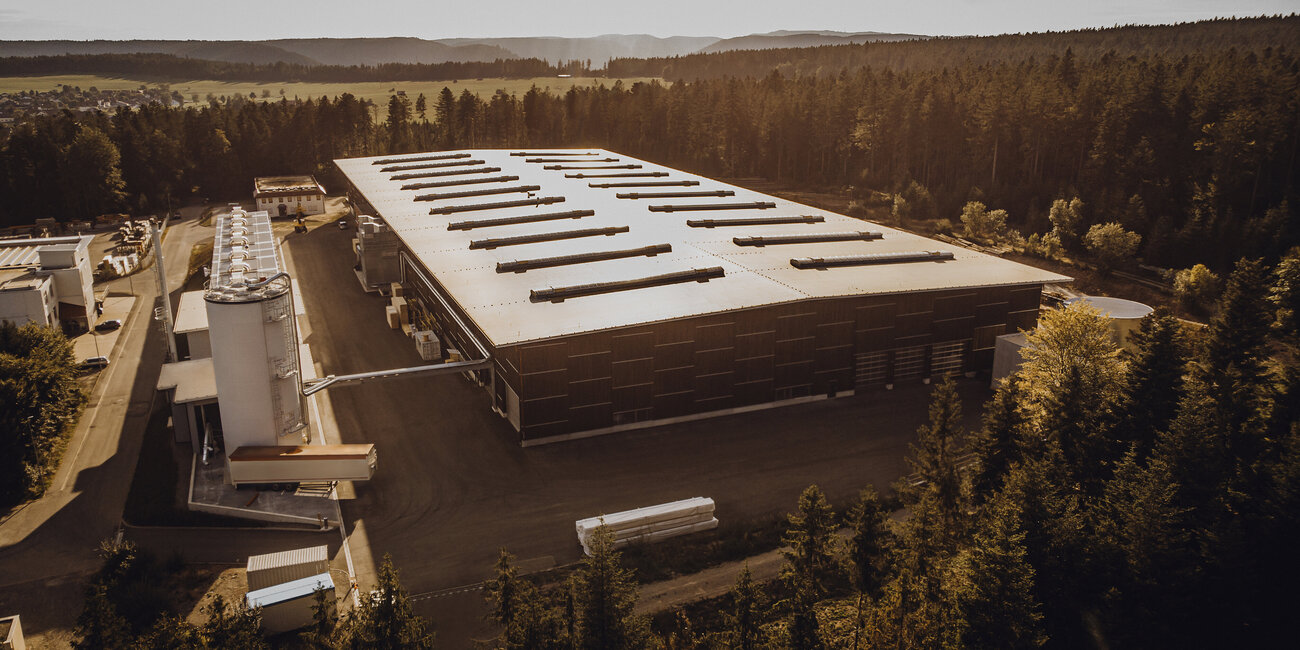
In 2022, the Black Forest saw the opening of a cross-laminated timber plant that fills a gap in more ways than one: HolzBauWerk Schwarzwald is the first production site of its kind in Germany's largest forest region. The company refines regional timber and works with timber construction customers in the region on an equal footing.
Originally developed in the 1990s, cross-laminated timber (CLT) has now established itself as a successful product for the construction of residential and commercial buildings. The introduction of timber construction into multi-storey construction has led to an even more rapid upswing, which is further boosted by the increasing proportion of timber construction in public projects.
In view of this success story, the establishment of an industrial CLT plant in the Black Forest was overdue. To this day, such a production site has been lacking in this largest closed forest area in the traditional timber construction state of Baden-Württemberg.
Three entrepreneurs from the region have joined forces to found HolzBauWerk Schwarzwald GmbH in Seewald-Besenfeld: Manuel Echtle of the eponymous sawmill in Nordrach, which specialises in silver fir three-layer panels, Klaus Henne from the Karl Streit sawmill in Hausach, which produces over 200,000 m³ of construction timber annually for its European clients, and Jörg Kübler from the Kübler sawmill and the Graf & Kübler jointing centre in Haiterbach. The three partners were motivated by the idea of refining sawn timber from local forests to create new sales markets. Their focus was on the region. Firstly, in terms of raw materials: all timber comes from the Black Forest, and a key aim of the new company was to create a market for local silver fir. It has an important function for the Black Foret's silviculture, but so far there were no attractive products for them. "It works extremely well in the quantities we now process in CLT," explains Jörg Kübler, "and as a visible surface, it even gives us added value."
On the other hand, the trio has defined the regional character of their business idea with their target group in mind. Jörg Kübler not only contributed his experience with CAD systems and CNC machines from his work at the jointing centre, but also a close relationship with many timber construction companies in Baden-Württemberg. "We have always worked with these companies on an equal footing because we are interested in long-term business relationships," he recalls. "That's why we stood by our customers during the sharp price increases caused by the COVID pandemic and in turn benefited from this in the third and fourth quarters of 2022. We wanted to provide these companies with a high-quality timber construction product with our CLT range. Working in partnership and direct contact is the approach that we want to pursue with HolzBauWerk." This is why the products from Seewald-Besenfeld are mainly sold via close contact between HolzBauWerk and timber construction companies. Only a small percentage goes through retail.
With this approach, the company sets itself high standards in terms of the delivered quality. The HolzBauWerk itself is an embodiment of this aspiration, growing steadily during the planning phase.
"Maybe we would have liked to start a little smaller," recaps Jörg Kübler, "but it became increasingly clear that we needed a certain size to achieve what we wanted. We didn't want to cut back here, because we have put our heart and soul into our project."

It is clear from the very beginning of the production chain, which consists of eight drying chambers in the outdoor area, that the imposing dimensions of the plant really are necessary. Although Seewald-Besenfeld and its three affiliated sawmills are largely self-sufficient with timber, there are several other suppliers from the Black Forest.
In principle, this harbours the risk of processing variably dried timber. This is why Seewald-Besenfeld keeps the drying process to 8-10 per cent residual moisture under its own control to ensure the consistently high quality of its own products. The aim: top quality CLT, free of cracks, and in fine visual appearance, in keeping with the high quality of Black Forest timber.
To meet this requirement, the kiln-dried timber passes through a sorting plant as the first station within the production hall. Here, rejects as well as outer and inner layers are segregated and damaged areas are trimmed from the boards before they are transported to a buffer store.
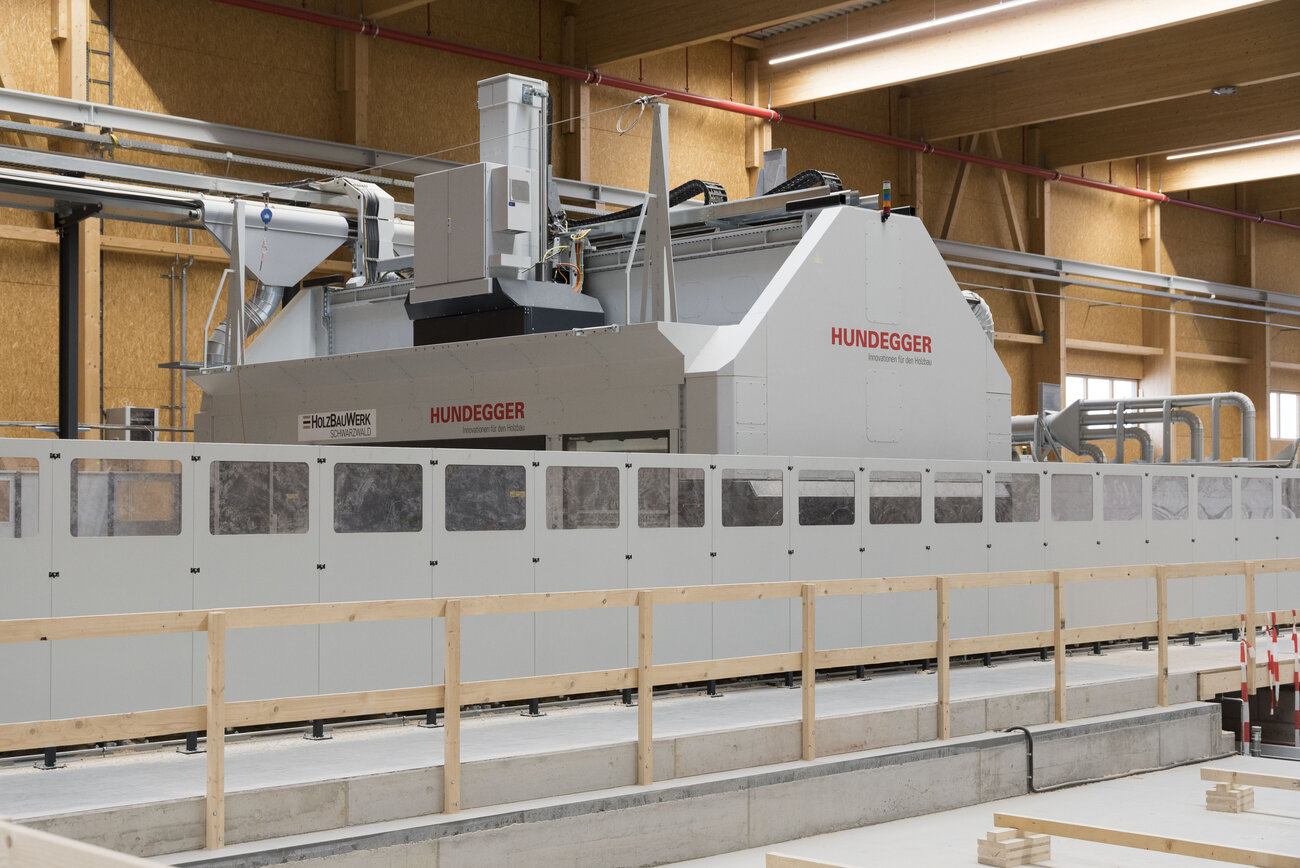
This is followed by the first stage of CLT production in batch size 1: a finger-jointing line. The glued endless board is then cut to the required element length. From the moment it is cut to size, each board is registered in the HolzBauWerk's fully automated production control system as part of its target element. This allows the customisation of each element.
A few conveyor steps further on, while the finger-jointing dries, the cut boards are glued together to form a single-layer panel - a complex process that is not done for its own sake, but rather has concrete benefits for the customer: Gluing the flanks to form single-layer boards creates homogeneous surfaces and improves the physical building properties because the boards are seamless and consequently smoke and airtight.
The powerful hydraulic press, which presses several glue-coated single-layer panels into finished elements, also has its advantages. As this press has a contact pressure that is 10 times higher than conventional vacuum presses, HolzBauWerk requires less glue. Only formaldehyde-free PU glue is used, which does not cause any emissions after drying.
There are also fewer problems with slightly warped raw materials and they supply CLT elements that have excellent tensile strength and extremely narrow glue joints of less than 0.1 mm. Plus, Seewald-Besenfeld can do without relief grooves in the boards, which could lead to air pockets and impair the smoke-tightness of the elements.
The elements are already airtight from only three layers, up to nine are supplied as standard. The element thickness is between 40 and 320 mm, the maximum length is 16 metres and the width of the panels ranges from 180 to 350 cm. Silver fir can be used as a premium surface layer, and HolzBauWerk can also supply pure silver fir elements on request.
At the end of the production chain, the CLT elements are sanded in the grain direction and customised for the respective project on a Hundegger jointing system. They offer three visible surfaces, of which the premium "Residential Visible" is sanded over the entire surface and cross-sanded on request.
The three founders realised their production quality standards with the technology supplied by Weinig, which ultimately required a hall surface of 13,000 m². HolzBauWerk Schwarzwald aims to produce 40,000 m³ of CLT per year as a first step.
Needless to say, process control plays a central role in such complex industrial production. For example, in batch size 1 production, each board needs to be assigned to the finished element and optimised for this element. This is also because the longitudinal and transverse layers are produced on parallel lines and the position of each component in the production process always must be clearly defined, such as during loading and unloading of the chaotic panel store. In Seewald-Besenfeld, a software from TimberTec, a company that specialises in software for sawmills, glulam manufacturers and the timber trade, handles the central process control.
TiCom ERP perfectly performs this task, but is not suitable for 3D planning and transfer of CLT elements, which are essential in the communication between CLT producers and processors. HolzBauWerk Schwarzwald uses 3D CAD/CAM software from Dietrich's Technology for this task. The CAMBIUM software supplied with the joinery system converts the CAD/CAM data into raw data for process control and intervenes in the production process from the raw panel nesting stage onwards.
We chose Dietrich's firstly because we are on the same page as the majority of our customers regarding digital tools. On the other hand, Dietrich's CAD/CAM is well positioned for 3D design, especially when it comes to combining CLT and timber frame constructions.
Andreas Bauer, Head of Construction and Jointing
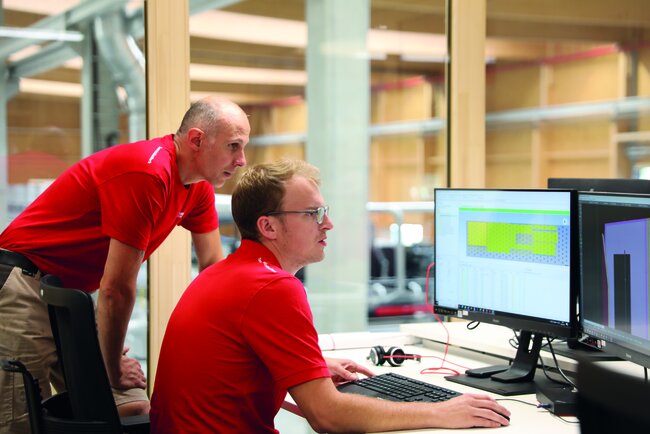
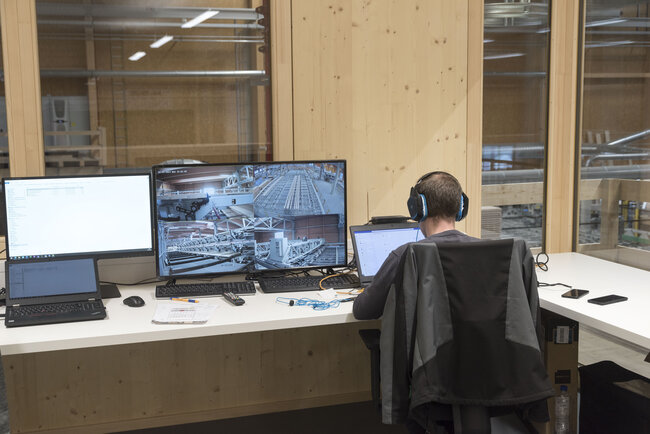
"The software can be used to design in both systems. And with DC-Calcs, we get a structural analysis module from the same system, so that we can map a large part of the planning process consistently in Dietrich's."
This is important because the structure of the CLT elements is optimised to suit the building's statics. Their layer composition varies, depending on the tension direction of ceiling elements or on the loads to be transferred from a wall element, for example. "There are also structural engineers who deliberately change the layer structure to optimise properties such as the absorption of point loads, burn-off or flexural rigidity," explains Jörg Kübler.
If the structural engineer uses DC-Calcs, then the layer structure selected in the statics program can be transferred 1:1 to the process control to initiate the production of the respective layers. The uniformity of the data material achieved in this way is ideal for the production process. It extends to the internal component organisation and to the details of individual work processes. Here, for example, a consistent working direction of the milling tools is preset at the CAD/CAM software level to achieve the best possible visual quality.
The end-to-end digital process also has benefits for the customer. They can already select a layer structure and their own surface quality during their own work preparation and thus specify clearly which type of element they would like to source from HolzBauWerk Schwarzwald. This minimises communication errors. A component catalogue with standard HolzBauWerk structures included in the software also gives customers convenient support when choosing the right element structure.
In Seewald-Besenfeld, this set-up is reviewed again and, in the best case, can be transferred directly to production control. If there are any adjustments - for example to specific features of the production process - the customer will receive the new data in their own software and can correct or approve it. Andreas Bauer: "This feedback is particularly straightforward if everyone speaks the same software language."
Naturally, there is no reason why HolzBauWerk Schwarzwald cannot import data from other programs into the production control system. Dietrich's has the necessary interfaces, and the IFC imports and exports are so good here that we can continue working smoothly."
In Jörg Kübler's eyes, though, Dietrich's CAD/CAM can do some things so well that he only wants to realise them in this software: "This includes, for example, the creation of 2D plans based on 3D design. In practice, I always need these so that those involved in the project, such as the inspection engineer, the architect or the client, can understand what is actually being built."
According to Jörg Kübler, Dietrich's is "more efficient than all other programs, even in the first step, and this gap widens if there are later changes during the course of the project. I enter them here, click on Refresh and they automatically pass through all instances. This means that all plans are changed with a single input and are updated immediately, unlike when I have to completely redo the 2D plans in other programs." This planning dynamic solves a serious resource problem for Jörg Kübler: "In view of the skilled labour shortage, our most important resource is good work planners." It also provides a time and cost advantage, which is even more important as Seewald-Besenfeld analyses a project beyond cross-laminated timber and can also supply customers with plans for beam jointing, timber frame or steel structures on request.
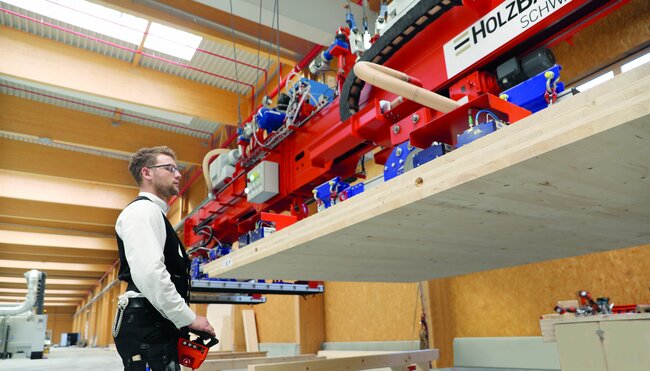
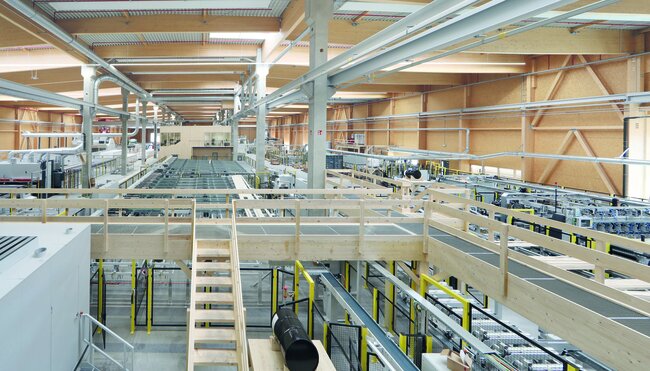
Jörg Kübler: "Dietrich's allows us to work flexibly with all variants of delivery depth. For example, we can provide the customer with the plans for timber frame elements in the building, can outsource the elements on this basis or build them themselves to retain the added value in their own company. Our scope of delivery covers everything from a single CLT panel for a renovation project to a complete construction kit as a carefree package."
As an example, the Managing Director of HolzBauWerk cites a project where the laser measurements were taken on site for the customer, who designed the elements in Dietrich's using the resulting point cloud, and these were then produced after finalisation and approval.
A seamless collaboration, right down to the Hilti connectors, which were pre-assembled by HolzBauWerk and measured by the customer on the construction site. Accordingly, Seewald-Besenfeld's clientele ranges from small carpentry firms ordering a dormer to medium-sized companies that mainly generate their turnover in multi-storey construction. On top of this, there are customers who are specifically interested in HolzBauWerk's silver fir products.
Architects are those particularly interested in the simple elegance of the 100 per cent Rift silver fir visible surfaces for their modern projects. A second group prioritises the regional aspect of silver fir, i.e. building with a native tree species that plays an important role in the Black Forest’s ecological silviculture.
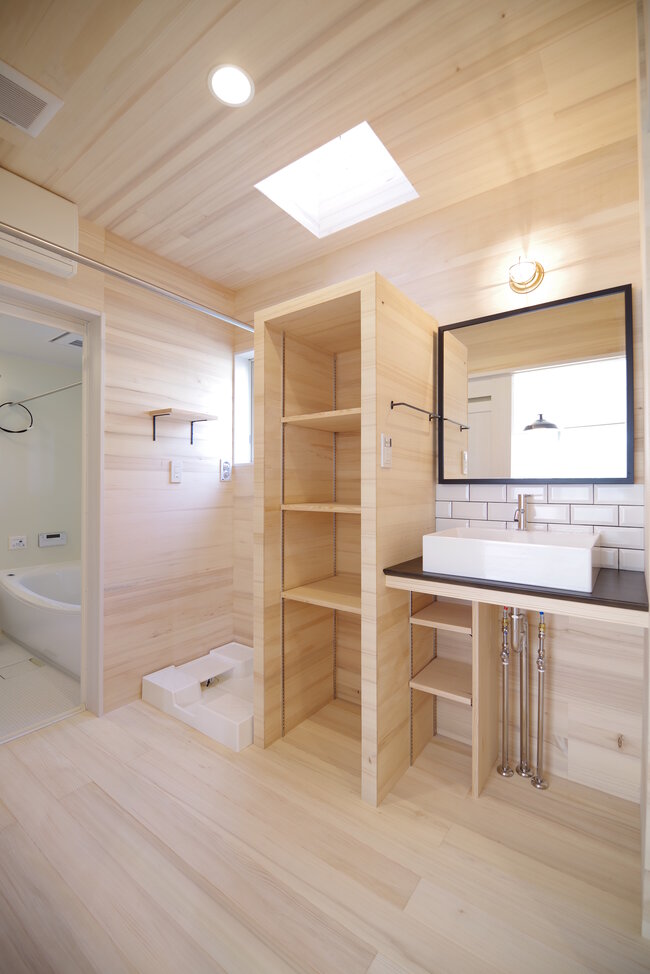
This group includes commercial clients who want to make an ecological statement with this type of construction and private clients who want to promote ecological forestry with their own home and minimise their carbon footprint: Both are interesting target groups that place lucrative orders for timber construction.
This is why the people in Seewald-Besenfeld are optimistic about the future, especially as the HolzBauWerk got off to a brilliant start early on: The company is already reaching out for new staff to work a second shift. Considering the capacity, it is already clear that the local delivery region - currently Baden-Württemberg, neighbouring federal states and neighbouring countries - could gradually be expanded. Even then, the founding trio will continue to focus on refining regional timber and maintaining close ties with their timber construction customers.